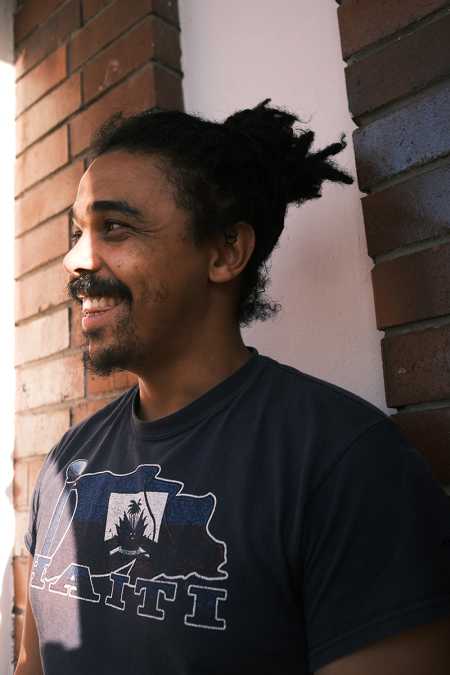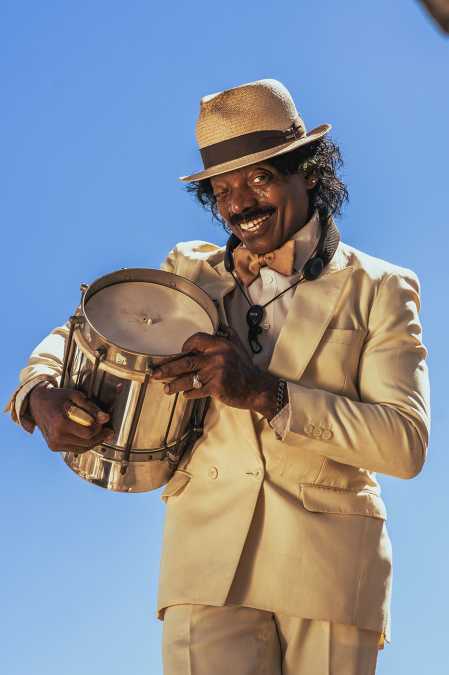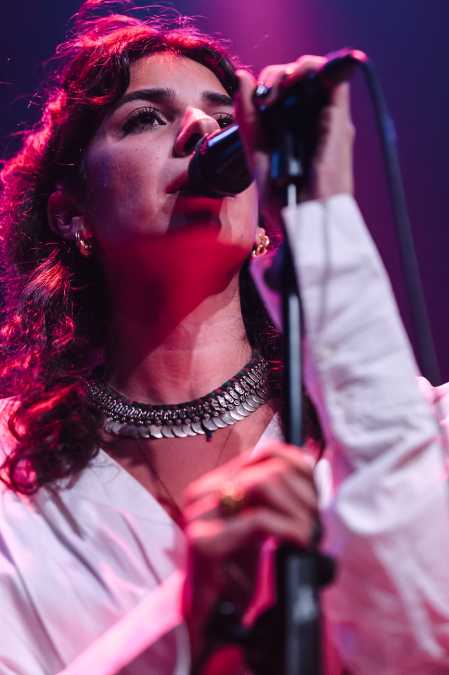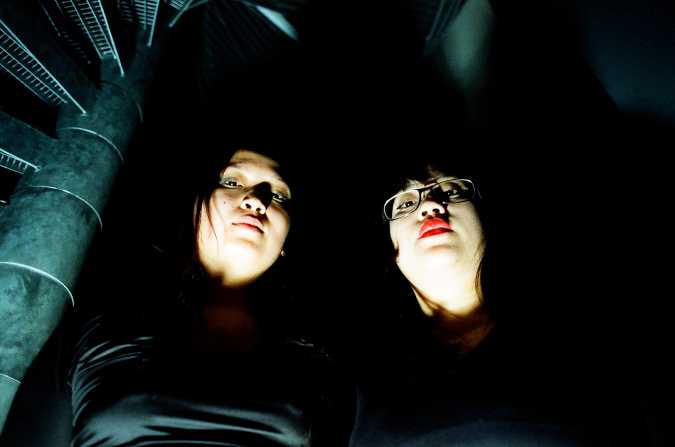On Friday, 8 November 2024, Le Guess Who? will witness the magic of legendary Cumbia and Gaita ensemble Los Gaiteros de San Jacinto. To say that we are excited about welcoming them to Utrecht would be a massive understatement. In fact, the influence of this Grammy-winning, generations-spanning band on the trajectory of Latin American music per se can not be stressed enough.
Dubbed "the authentic masters of traditional Colombian Music" by the New Yorker, Los Gaiteros de San Jacinto have toured the world for decades, helmed by lead vocalist Rafael Castro. And while there are no boundaries to the joy fans everywhere have experienced with Los Gaiteros’ take on traditional Latin folk, there is something to be said about the impact these melodies and rhythms have had on the collective memory of their native Colombia. That’s why we’ve asked a particularly poetic mind, fellow Colombian musician and friend of the festival, Julián Mayorga, to capture the essence of Los Gaiteros de San Jacinto in his very own words. This is his story.
Words by Julián Mayorga
Photography by Jazmin Morelos and Javier Mutis
I am dreaming. It's 1995, I'm 10 years old and I'm dreaming. I am dreaming but I see myself sleeping. Back then we used to say that if you see yourself in dreams, it means that you have unfolded; in other words, that your spirit has left your body and is wandering around. Well, that's exactly it, I have unfolded and am going down the stairs of the house. I am levitating and looking for a little noise, a tiny insect-like whine, a güere-güere, that calls for me. The noise comes from our new record player: a bulky device that includes a cassette and CD player, which we had bought as contraband last year when we fleetingly passed through the city of Maicao.
It is a tiny music that does not come out of the speakers but solely from the pure contact of the needle against the grooves of the vinyl. An um-shh um-shh um-shh um-shh um-shh um-shh stands out that I recognize like seeds in a dry totumo gourd. Um-shh um-shh um-shh, non-stop. I sharpen my ears and hold my breath.
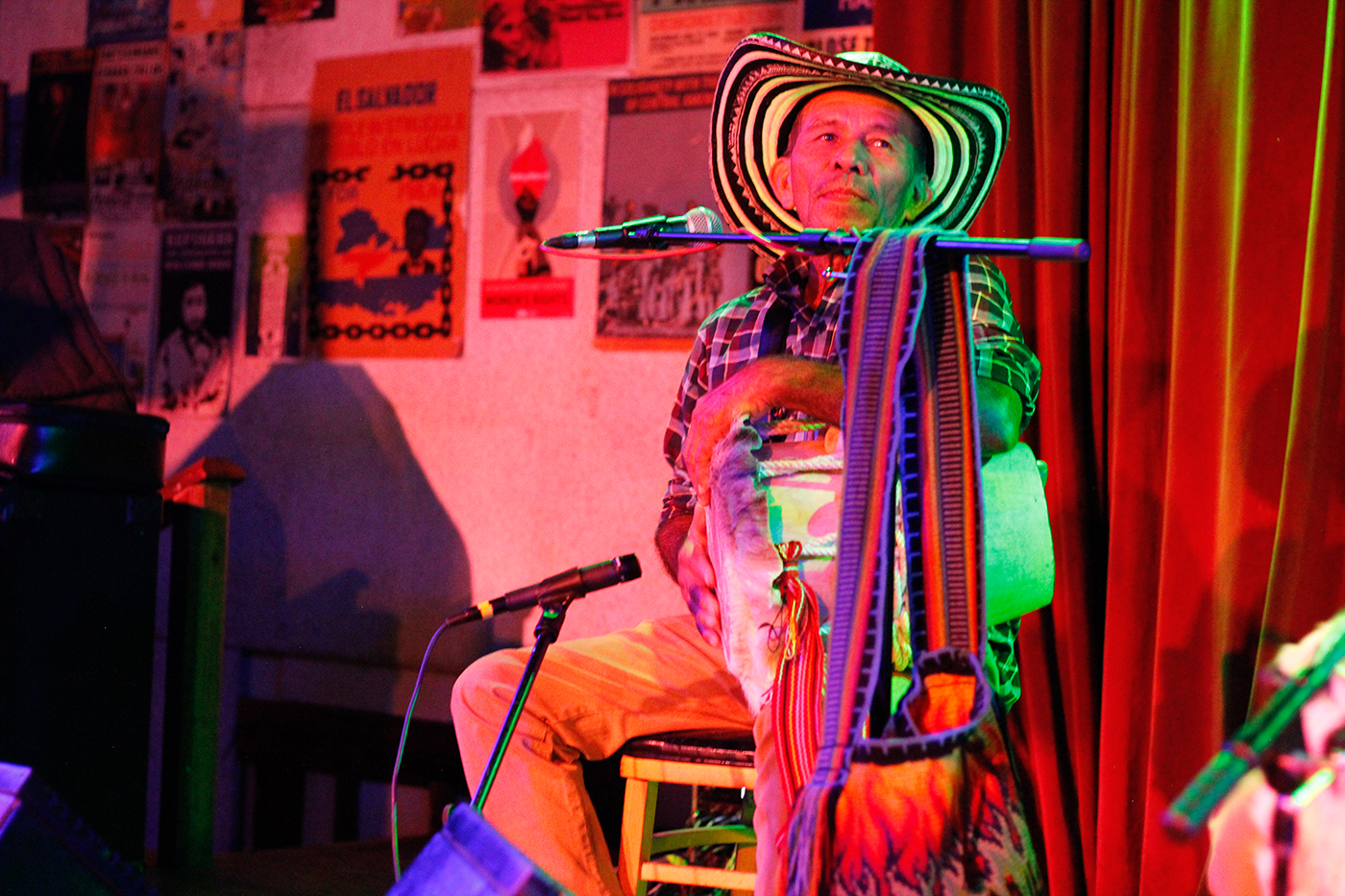
Um-shh Um-shh Um-shh Um-shh. I can already hear and see the whole ensemble. They are Los Gaiteros de San Jacinto, dressed in all white. I dream of them dressed in white, with a hat and raboegallo, which is the countrymen's traditional festive attire.
Los Gaiteros de San Jacinto are a traditional music ensemble from northern Colombia, a cumbia group. Although Cumbia is a very broad term, which can entail different rhythms and expressions throughout Colombia and Latin America, it’s safe to say that Los Gaiteros are, indeed, a cumbia group. Cumbia de Gaitas.
In my dream, the humanity of the Gaiteros appears expanded. From the mouths of two of them emerge hollow tongues, two long flutes made from the wood of a cactus. The Sanjacinteros are connected to their gaitas through a very old mechanism: they blow the calamus of the feather of a duck that is joined by a mixture of beeswax and charcoal from wood fire, to the stick of the Cardón cactus. The gaita is an indigenous vessel, a wind-powered vehicle, state-of-the-art technology, a design so good that it has barely undergone any changes. Its shadow spreads in all directions. One of the gaita tips is in the past; in a past veiled by the noise and pollution that came with the pachakuti, the aftershock of the European invasion. The other tip extends into the future, into a future so distant that we can barely see it.

The rest of the men in the ensemble beat the drums with their bare hands. ‘The drums are made from the trunk of a tree that grows around here, in Montes de Maria’, one of Los Gaiteros tells me. ‘We've been doing it that way for a long time. It's the first thing we teach to children.’ The drum came from Africa with the enslaved people. It is yet another instrument that has hardly undergone any changes.
It has always been said that in cumbia Spanish, African and Indigenous technologies come together. Put this way, mestizaje - the racial and cultural mixing of Indigenous, African and European ancestries - sounds like a meeting of equals, like a communion. Nothing could be further from the truth. The European invasion was a destructive, mean and rabid force. A smoke that suffocates and ruins everything. The colonizing machine also gives off a corrosive substance, an acid that continues to act over time; undermining the terrain, eating away languages and ways of finding beauty; veiling the connection we have with our other pre-colonial pasts. But the mist is not omnipresent, it cannot penetrate every field of existence.
From the fruits of these plants hang phonetic contraptions, words to put a name the peasant reality and life in the village; flutes, gaitas, maracas made of totumo and deer skin drums, bottles full of palm wine and chicha; and arepas made of nixtamalized corn. Between the cracks, resistance seeps in. Between the cracks one survives. Kachkanikuraqmi. We are still here, we still are.
We are now in the backyard of a house in San Jacinto. It is very hot and sweat drips down my eyebrows and into my eyes. I am wearing a guayabera shirt. In the interior of Colombia they started to become fashionable and all the hot-earth-kids places had at least one. I don't stand out, the other Sanjacinteros also wear guayaberas. Mine is yellow and soaked with sweat. We are in the backyard of a house in San Jacinto, Los Gaiteros are playing a puya and there are several people dancing and drinking rum and aguardiente and who knows what else. The puya is a fast rhythm, a wild acceleration. A snake that beats in the air with violent spasms. This puya, in particular, speaks about itself, about the puya from San Jacinto. It is a little snake that uncoils like a spiral, and drags us back and forth, that lifts us up and pulls us down. Although I'm only ten years old, the lyrics make me laugh because they have a double entendre and I think I understand it.
The singing voice could be that of Toño Fernández, Juan Chuchita, Catalino Parra or Rafael Castro Fernández, I don't know. In that sense, Los Gaiteros de San Jacinto are also unfolded. Unfolded and at the same time possessed by their fathers, sons, uncles and ancestors. That is why in my dream, each musician seems to have several arms and several mouths; as if an Indian deity appeared in the Montes de María to play the alegre drum and the gaita.

If I raise a little higher and squint my eyes, drawings begin to appear on the weaving: complicated constellations and forms that I cannot understand, and others that are more familiar to me, because we, the people from the interior of the country, have similar pasts, and we have also learned to party in between the farmer’s day and the work in the city. Those drawings, those marks are already indelibly inscribed in Colombian and Latin American culture. Those songs, those melodic turns of gaita and those drum beats of the elder, before, and of the younger ones, now, have already shot in all directions, have already triggered other drum beats throughout Latin America, other melodies in other gaitas, accordions, guitars and synthesizers. Now, cumbia is dragging us into the future.
****
Julián Mayorga (Tolima, Colombia, 1985) is a Colombian musician and producer based in Madrid. Whether as a prolific solo artist or as one half of Flash Amazonas, Mayorga’s music feels like it has been conceived in the laboratory of a mad scientist: a B-movie villain who breathes life into fantastic, impossible and dangerous beings. Mayorga has been engulfed in the sounds of Los Gaiteros de San Jacinto all his life. It was the first music he ever danced to.
Los Gaiteros de San Jacinto perform at Le Guess Who? 2024 on Friday, 8 November, as part of the program curated by Mabe Fratti.
